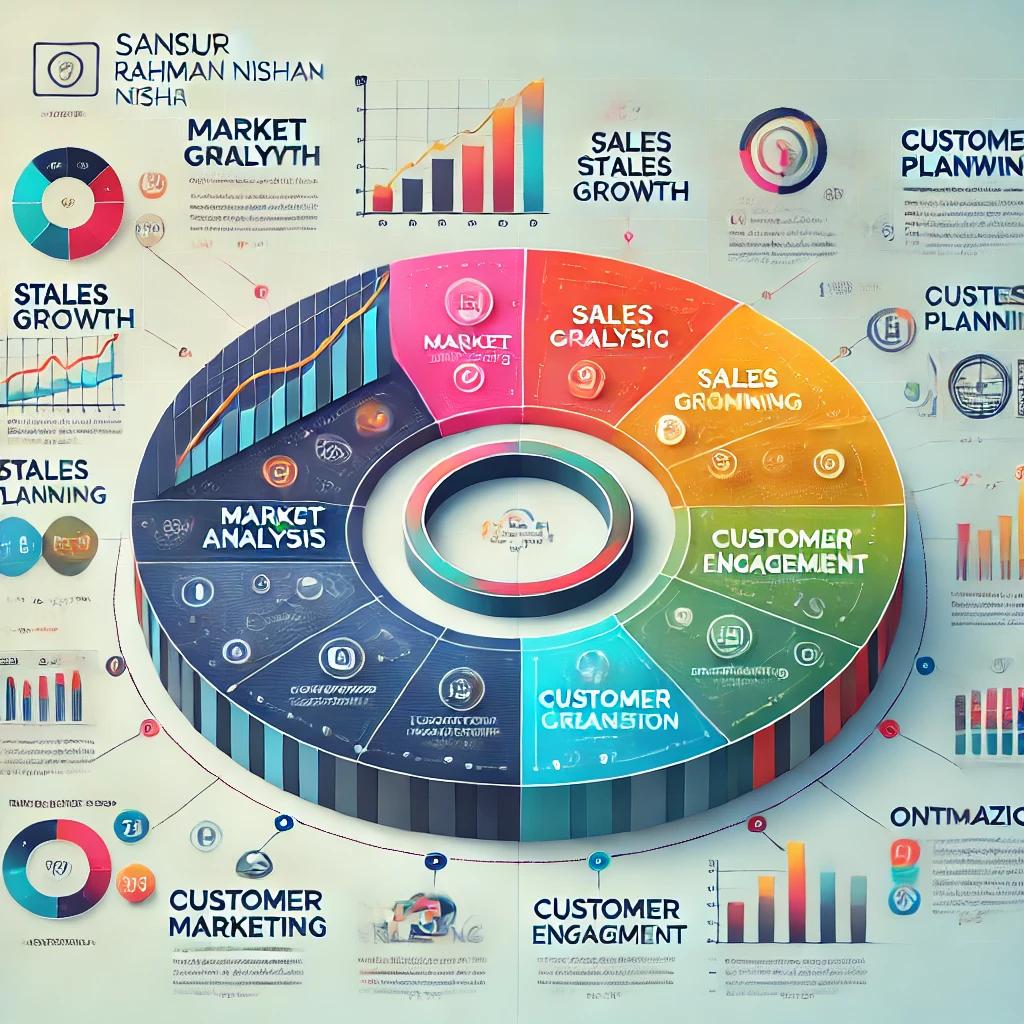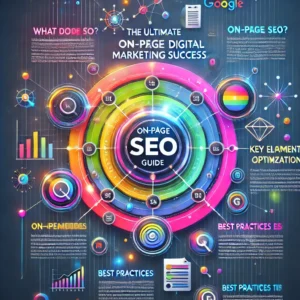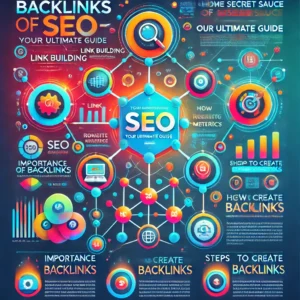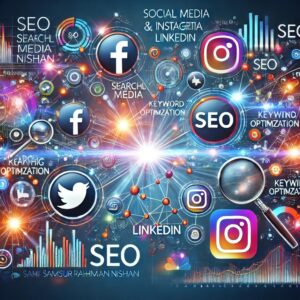Like any digital marketing discipline, local business owners need to make continuous decisions on both where to spend their time and resources, in addition to where they should be spending their entire outreach budget. In organic social & search the decision typically boils down to organic vs paid strategies. As new AI-driven technologies enter the mix alongside an ever-growing variety of options, it only gets more difficult to navigate the best way forward for your business.
In this ultimate guide, we dissect the differences between organic vs paid search engine and social media strategies. Together, we will discuss the benefits and downsides of both, share some tips for best practices, and aid in your decision-making on where to direct your time and resources toward the highest possible returns.
Organic Vs Paid Strategies: Know The Difference
Now, before going into specific details let us briefly understand the core differences between organic and paid:
Organic initiatives: Plan on sustainably growing over time, by creating “top-of-the-funnel” assets (content and brand identity to nurture at scale), building up industry recognition of authority and trust through distribution, and performing proper SEO practices (both long tail keyword targeting as well as essential link building) to maintain top rankings on SERPs across structures from Google/H0/Google/Bing/Yelp/etc., etc. Building up an audience this way takes commitment, consistency, and time.
Paid Strategies: In this approach, you can very much invest in advertising to gain visibility instantly and tap into a larger audience faster than other strategies. Paid strategies include pay-per-click (PPC) campaigns, social media ads and boost posts for paying faster results.
Local business owners have the option of choosing either this or that approach—both for search engines and social media. With each, you realize some benefits and drawbacks—the time, costs, and resources needed.
Now, let us take a look at how organic and promoted techniques function for search engines as well as social media sites.
SEM (Search Engine Marketing): organic vs paid search
Search Engine Marketing (SEM) includes both organic search engine optimization (SEO) and paid search advertising (PPC). SEM is used by local businesses to increase the visibility of their search engine results pages (SERPs) and drive traffic to their sites.
1. Long-Term Visibility: Organic Local SEO
For local businesses that are trying to rank in the Google Local Map Pack and into organic search results, then local SEO is key. Which means: Making your website and online presence able to be found by customers in your locality. There are some practical ways to improve your local SEO.
Organic Local SEO Best Practices
1. Keyword Research:
The depth of keyword research you perform to discover the terms your potential customers use to search. Concentrate on local-specific keywords (i.e. “Coffee Shop in Miami Miami”).
Use the likes of Google Keyword Planner, SEMrush or Ahrefs to put together a list full of keywords that have a relatively high volume and reasonable competition.
2. On-Page SEO Optimization:
Use relevant keywords in title tags, meta descriptions, headers, and image alt texts.
Your site should be mobile-friendly because more than 60% of all searches for your type of business in your area will come from a mobile device.
Optimize the speed and navigation of your site to create a better user experience, something Google pays close attention to when ranking websites.
3. Local Listings & Google Business Profile (GBP):
Set up and optimize by accurately filling out your business name, address, phone number (NAP), hours of operation, and categories on your Google Business Profile.
Enhance your profile with high-quality photos and videos.
Acquire positive reviews from customers, as they can be an absolute game-changer when it comes to your local ranking!
4. Content Marketing:
Create localized blogs, local guides, and how-tos around your audience. Focus on specific subjects such as local happenings, community stories, or industry-specific advice.
Do use internal linking in order to connect content that has relation and help on-site navigation.
5. Backlink Strategy:
Gain backlinks from local authority websites, news sites, and niche blogs. Link up with other businesses in your area for co-promotions and guest posts.
Pros of Local SEO:
Affordable: Typically much less expensive than paid ads to initially top, with long-term benefits.
Credibility — Users find organic results more reliable.
Sustainable Traffic: Organic traffic, once built or established can come to you constantly without spending on ads regularly.
Cons of Local SEO:
Slow Results: Significant organic SEO traffic can take months to materialize.
Google frequently updates its algorithms and the changes can adversely affect your rankings, so you will have to keep optimizing.
It can be difficult to rank organically in more competitive industries.
2. Paid Search (PPC): Get your business instant traffic
Paid search advertising consists of placing targeted ads on networks like Google Ads or Bing Ads to increase traffic to your website. They show up on top of the SERPs, giving instant visibility.
Tips For Paid Search Campaigns
1. Keyword Bidding Management and Budgeting
Buy keywords that have moderate competition but are high intent because they will give you a good return on investment (ROI)
Save your ad spend from irrelevant traffic using negative keywords.
Provide a Specific Budget, Bids Based on Performance (CTR, CPA, etc.)
2. Ad Copy Optimization:
Write ad headlines and descriptions that are catchy, keyword-focused, and include an action such as ‘Book Now’, or ‘Free Quote’.
Enhance your ads with ad extensions such as site links, callouts, structured snippets and so on to prove your CTR.
3. Landing Page Optimization:
Make sure that your landing pages also match with ad copy. It must have an optimized, fast loading time and easy-to-navigate page with clear calls to action.
Run A/B tests for headlines, images, and CTAs to understand what works best
4. Remarketing:
Retarget users who have visited your website but did not convert through remarketing campaigns. Display ads to encourage them back into purchasing.
Pros of Paid Search:
Fast results — your ads show up right away in search results as soon as you set them up.
Connectivity: You can segment audiences by location, demographics, or behavior.
Measurable Pitching: Straightforward measurement of performance metrics such as clicks, impressions, and conversions.
Cons of Paid Search:
Costly: In industries with heavy competition, CPC prices are on the higher end of the scale.
Solo Traffic: You stop to get traffic as soon as you turn off your ads.
Fraud clicks: Your ads might be clicked by bots or competitors, draining your budget.
Social Media Marketing: Organic vs. Paid
For local businesses, there can be no avenue more important than social when it comes to breaking in with your small community and driving brand loyalty. What Is the Difference Between Organic Social Media and paid Social Advertising?
1. Native Social Media: Building True Relationships
Organic social media is the free content shared on platforms like Facebook, Instagram, Twitter and LinkedIn that allows you to engage with your followers while nurturing a community around your brand.
Shake Hand With Organic Social Media Best Practices
1. Content Strategy:
Work on variety: mix of blog links, testimonials, behind-the-scenes posts, and live videos.
Leverage platform-specific tools, like Instagram Stories, LinkedIn articles, and Twitter threads to hook your audience.
2. Consistency & Scheduling:
Keep your posting schedule consistent with the help of social media management tools like Hootsuite or Buffer.
To figure out the best times to post for engagement, use analytics.
3. Community Engagement:
Try to reply to comments, messages, and reviews as fast as you can, it will create trust and customer loyalty.
Include Giveaways & Contests, and Polls This will create an interaction and broaden your reach.
4. Cross-Promotion:
Collaborate with local businesses or influencers to share each others’ content and expand your reach.
Join your efforts for social media campaigns, contests, or giveaways where followers of both communities can interact.
Pros of Organic Social Media:
Economical: No direct cost other than time and effort.
Brand Building: Helps to put a human touch on your brand and build relationships with the customers.
Audience Insight: You can get honest feedback directly from your customers.
Cons of Organic Social Media:
Diminishing Reach: Organic (unpaid) posts don’t get much reach any more thanks to the likes of Facebook and their algorithm.
Time-Intensive: Repetitive work required to generate good content whilst also interacting with followers.
Reliance on platforms: When the algorithm of the platform changes, organic reach, and visibility gets affected a lot.
Paid Social Media: Making Waves or Amplifying Your Voice
An example of paid social media advertising is using paid ads on Facebook, Instagram, LinkedIn and TikTok. The ads can be in image, video, carousel, or story ad formats.
Paid Social Media Best Practices
Audience Targeting:
Apply Detailed TargetingDetailed targeting features reach people based on demographics, interests and behaviors.
Find new potential customers by using custom audiences and lookalike populations through your existing customer base.
Ad Creative & Formats:
Use video ads, carousel ads, and story ads to experiment with various ad formats and delivery that best appeal to your audience.
Leverage eye-catching graphics and engaging text to drive your engagement rates higher.
Campaign Optimization:
Regularly analyze campaign performance and optimize targeting, bidding, and creatives according to data.
Bring them back: Use retargeting to recapture users who interacted with your previous ads but did not convert.
Pros of Paid Social Media:
Immediate Exposure: Go to the market and start converting fast.
Bulletproof Targeting: Define the audience using very refined metrics.
Scalable Campaigns: Scale campaigns that are working by scaling the ad spend up high.
Cons of Paid Social Media:
Costly: Designates a constant advertisement budget, particularly in competitive markets.
Ad Clutter: If users are seeing the same ads over and over again, they may become disengaged.
Paid ads are reliant upon social media algorithms. Inscribe on, 03:25 reaction to algorithm changes.
Applying the Right Strategy To Your Local Business
Choosing the correct local marketing strategy for your business depends on thoroughly understanding your particular goals, budget, and target audience. Choosing organic against paid is rarely the question — best approach might be a blend of both.
For deciding the best way, we must think of a few things:
Objectives: What is your number one goal? Are they to build brand awareness, boost website traffic, drive leads or sales? Paid is best for swift victories, while organic shines in long-term brand building.
Budget: In case you are short on marketing money, try building organically first. Budgeting is essential because paid ads can be expensive.
Target Audience: Know where your audience gets around the web and the way they interact with brands. If they are heavy in social media, an organic/bureau combination might do the trick.
Within this post we will consider the timeline (pragmatic), it you are looking for fast result, well organic channel take time to build visibility and traffic so paid advertising would be a faster way to go. These organic strategies require patience but can provide you with a solid long-term return.
Often, a hybrid strategy that takes the best of both paid and organic methods is what works best:
Leverage Paid Search for Immediate Results — Get creative with paid search ads to attract direct traffic almost immediately, while you continue working on your organic SEO.
Paid Social Ad Testing: Test what messages and creatives work best with your audience using paid social, before scaling to a larger organic campaign.
Grow Long-Term with Organic SEO and Social: Scale your organic assets across channels to cement brand authority over the long term and drive a steady stream of energy from sustainably loyal audiences.
Data-Driven Insights and Analytics
The biggest benefit of digital marketing is that you can track and measure the success of your campaigns in real time. Data-driven decision-making is the key to both your organic and paid strategies — you need these in order for both tactics to succeed. Ways of utilizing analytics effectively
1. Google Analytics for Website Insights
Check traffic sources to see how users are getting to your site (organic vs. paid vs. social media).
Study your site with metrics such as time spent on pages, bounce rates, and conversion paths.
Install Goals and Events to know exactly what actions your users are taking on your website (form submits, clicks, etc.)
2. Social Media Insights:
Track engagement, impressions, and followers using Facebook Insights, Instagram Insights, and LinkedIn Analytics.
Identify the content types that engage well and modify your content strategy accordingly.
Measure your organic and paid campaign performance using metrics such as Click-through rates (CTR), likes, shares, and comments.
3. Paid Advertising Metrics:
Use Google Ads and Facebook Ads Manager for real-time campaign performance tracking.
The main numbers you want to follow here are CTR, CPC, conversion rate and ROAS.
Use A/B testing to find out the ads and landing pages with higher visit rates and conversion.
4. CRO (CLICKING OPTIMIZATION)
Utilise Hotjar or Crazy Egg to see how users interact with your landing pages so you can find issues.
Try various headlines, CTAs, and designs by using A/B testing to increase conversions.
How AI Plays a Role in Digital Marketing
From changing with technological advancements to high-fidelity artificial intelligence (AI) being one of the most important tools in digital marketing. Businesses are adopting and curating on organic and paid strategies with the help of AI.
1. AI and Organic Marketing
Create Content: ChatGPT and Jasper can help you in coming up with ideas for content creation. AI might not be able to replace creativity but can certainly help boost it and automate the time-consuming content creation process.
SEO Optimization: Tools such as Surfer SEO and Clearscope analyze how often a keyword is used, flagging it for optimization so that your content ranks better.
Voice Search Optimization: Voice search Once again, AI is a major component of this as voice search assistants such as Google assistant and Alexa are gaining more popularity. Creating content that targets voice search queries so that you can get organic traffic through these channels.
2. AI and Paid Marketing
Automated Bidding: Google Ads offers automated bidding strategies driven by AI, allowing for real-time bid adjustments to improve campaign performance.
Audience Segmentation: AI can study audience data to catch high-intention users and perform segmentation for better audience targeting.
Chatbots: Use AI-powered chatbots on your site to enhance customer interactions, respond to inquiries, and direct visitors through the sales funnel.
Predictive Analysis: By analyzing historical data, AI can suggest which audience segments are most likely to convert and help businesses use their budget more effectively.
Common Problems and Solutions in Local Digital Marketing
When municipality establishments intermingle digital selling implement this exploited to exercise articulated challenges. Below are some challenges that are commonly faced along with actionable steps to tackle them:
1. Limited Budgets
Challenge: Most of the time, these small businesses run on a tiny budget and they are unable to compete with the bigger companies in paid advertising.
The Answer: Look for targeted, inexpensive ad campaigns. Remember that if you use geotargeting, only people who are in a certain radius from your business will be able to see those ads. Focus on content marketing and SEO — which can pay off for many years to come.
2. High Competition
Challenge: Gaining visibility in competition with bigger, established businesses operating in the same industry is challenging.
Solution: Local Content, Community First, and Customer Service, be sure to claim your Google Business Profile and use it wisely to become a local standout!
3. Keeping Up with Trends
Challenge: Digital marketing is Iterative, but accommodating these updates is always a challenge.
Solution: Sign up for trustworthy digital marketing blogs, participate in online webinars, and – if you can afford it – engage a digital marketing agency or consultant to help keep you on top of trends.

DIGITAL MARKETING/SEO SERVICES FAQs
Difference Between SEO & SEM Question: What is the Difference Between SEO and SEM?
SEM includes SEO, where the emphasis is on improving organic search ranking through optimization techniques. SEM is a broader term that encompasses SEO as well as paid strategies like PPC.
What is the time taken by SEO to show results?
This is a long-duration process, as you know SEO cannot be done in a few days and must take at least 3 to 6 months or more time based on your competition and keywords.
Are Google Ads and social media ads only used separately?
There! Following the allurement of creating a set that covers both – Google Ads and social media ads can lead to doing it what is called an organism. Google Ads are user-intent focused (shows for what you type), whereas Social Media ads help with brand visibility, maximum reach, and engagement.
When should I go for organic and when paid?
Your goals, budget, and timetable will determine this. Paid strategies are effective if what you require is rapid visibility. Organic strategies are more suited for sustainable and long-term growth. It can also help in a hybrid way.
What Is Google Business Profile & How Can It Provide You With a Higher Rank?
Fill out your profile with real business information, good-quality images, and reviews from customers, and keep it updated as often as possible. Engagement-response to customer reviews
This is the million-dollar question when it comes to measuring performance – how can you know whether your paid ad campaign has actually been successful?
Keep reviewing the data, judging your campaigns based on CTR, conversion rate, CPC, ROAS… Refine targeting, bids, and creative accordingly.
Local business organic content tips
Local content marketing is vital. Write local event blog posts, cross-promote with businesses in your area, and answer questions nearby customers ask.
Make Conclusion of a Well-balanced Digital Marketing Strategy
In the end, there is no correct answer when it comes to organic vs paid digital marketing. The best approach for your local business is often to combine organic and paid efforts to get more eyeballs, trust, and customers.
In many ways, something like SEO (search engine optimization), and attention-driven strategies with other organic things, you have to think of the business truth that a lot of times people need to feel they actually made an effort to start buying from you over time so those are going to be critical for your long-term brand authority and customer attraction efforts. On the other hand, paid tactics such as PPC and social media ads provide businesses with fast exposure and almost instant results so they’re best suited to promotions and new product launches.
With this knowledge, you can develop a hybrid strategy for your content marketing approach that lends actionable insight and increased engagement to help your business scale with the right attention given to creating quality content. Success in digital marketing is not a one-time event; it is a continuous process of evolution, and staying adaptive to changes while learning will surely benefit you.
To learn more about how to devise digital marketing strategies and SEO services that align well with the unique needs of your business, go to samsurrahman.com. We are here to guide you through the complexities of digital and help your brand reach its marketing goals.
This broader guide, however, dives deeper into each subject with details about best practices in addition to analytics and AI integration and solutions for typical challenges. And it also aims to be informative for users and search engines (SEO-friendly). Please tell me if you want me to clarify or modify anything!





